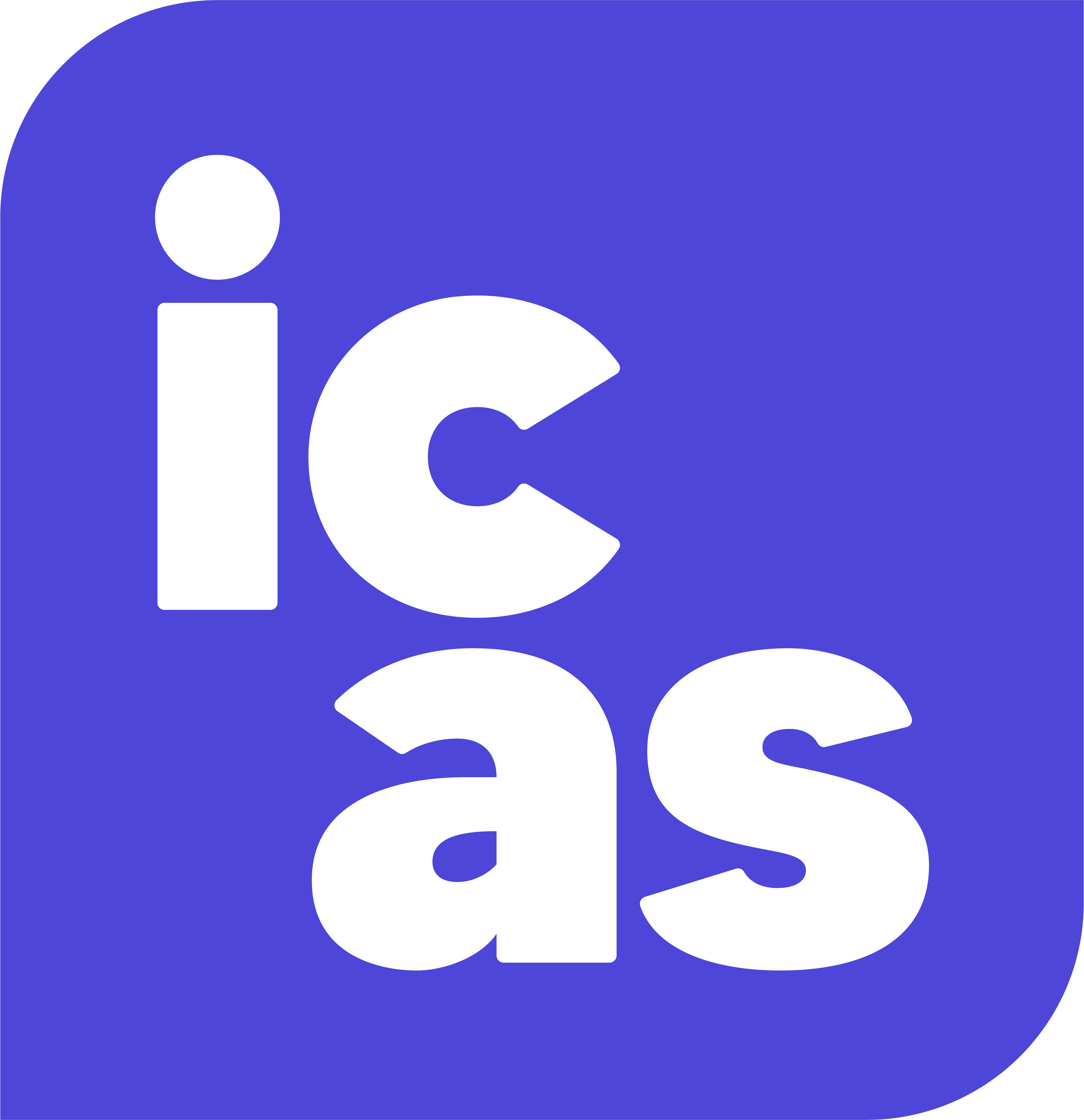Gift Aid, VAT and devolution: policy challenges for government, practical challenges for charities

Christine Scott and Anne-Marie Roberts reflect on the possible implications of devolution for policy-makers and for charities in relation to Gift Aid and VAT.
ICAS and the Scottish Council for Voluntary Organisations (SCVO) recently hosted a discussion event for charities and charity advisers to explore the potential impact of devolution on Gift Aid and VAT with HM Treasury, HMRC and the Charity Tax Group. It is clear from these discussions that further dialogue with the charity sector and between the UK and Scottish Governments is needed to ensure that charity tax policy keeps pace with the wider devolution agenda.
The Gift Aid system and the devolution of income tax powers
From April 2017, Holyrood will acquire further powers over income tax and will have full control over all income tax raised from the non-savings, non-dividend income of Scottish tax payers and the ability to set income tax rates and bands. There is a growing consensus that the power to set rates and bands will be exercised meaning that Scottish taxpayers will, at some point, pay a different amount of tax from taxpayers in the rest of the UK. There are also plans to take forward the devolution of some powers over income tax to Wales. However, the UK Government retains control over the personal allowance and all tax reliefs, including Gift Aid, meaning that income tax is being partially rather than fully devolved.
The history of Holyrood’s income tax powersThe Scottish Variable Rate of Income Tax (SVR)The Scotland Act 1998 granted Holyrood the power to vary income tax by up to 3p up or down in every pound. Holyrood never exercised these powers and controversially, in 2007, it emerged, that the IT infrastructure needed to operate the SVR was not sufficiently up to date to operate the tax. The SVR has been repealed. The Scottish Rate of Income Tax (SRIT)The SRIT was introduced in April 2016, under the Scotland Act 2012. It applies by reducing the rate of income tax applying on non-savings, non-dividend income by 10% across the basic rate, higher rate and additional rate of tax, and adding the Scottish rate applicable for the tax year. Holyrood had the power to increase or decrease the rates of tax by one amount only which would have applied across the three rate bands. The SRIT for 2016-17 is 10% and therefore during this tax year, Scottish taxpayers pay the same amount of tax as taxpayers in the rest of the UK. The SRIT is being replaced from April 2017 with extended powers over income tax on non-savings, non-dividend income. Power over income tax rates and bandsFrom April 2017, under the Scotland Act 2016, Holyrood will acquire further powers over income tax raised from non-savings, non-dividend income and will have full control over all income tax raised from the earned income of Scottish tax payers and the ability to set income tax rates and bands for Scottish taxpayer. The computation of income liable to tax, the personal allowance and all income tax reliefs remain reserved to Westminster. |
How could different income tax rates in different parts of the UK impact on the Gift Aid system? At the moment charities (and Community Amateur Sports Clubs) can claim Gift Aid at the UK basic rate of income tax: this creates a link between the tax paid by the donor and the Gift Aid claimed by the charity. If this policy continues once the Scottish basic rate varies from the rest of the UK, this link will be weakened. However, maintaining the link is also challenging as it means that all UK charities would need to know whether a donor was a Scottish or rest of the UK taxpayer with the administrative and potentially behavioural consequences that would entail: this is therefore an issue relevant to charities across the UK and likewise tax paying donors.
HM Treasury is keen to identify a policy solution which will ensure the continued effective operation of Gift Aid. At the event on 23 May it presented four high-level, hypothetical options for discussion, on which it invited views.
Options for the reform of Gift Aid (with key pros and cons)Option 1The UK basic rate is applied to all donations from UK taxpayers. This would mean that charities would continue to claim Gift Aid at the UK basic rate of income tax. This would be administratively simple for both charities and for tax payers. Although, in addition to weakening the link between the donor and the tax they have paid, individual charities would find themselves either winners or losers. For example, if the basic rate of income tax in Scotland exceeded the UK basic rate, under a policy of no change the recipient charity would receive Gift Aid at the lower UK basic rate. Option 2The Scottish or rest of the UK basic rate is applied to donations depending on the status of the taxpayer. This would mean that charities would receive Gift Aid commensurate with the basic rate of income tax paid by the donor therefore maintaining the principle that Gift Aid is the donor’s forgone income. However, this option is administratively more complex and the charity would need to know whether each donor is a Scottish or rest of the UK taxpayer. If making a donation is perceived as more onerous or riskier, this approach may damage charitable giving as a whole. Option 3Replace Gift Aid with public expenditure. Donations would be topped up by Government by a percentage of their value. This approach would be administratively less complex than option 2 as it would not be necessary to identify the tax paying status of donors. However, Gift Aid as a tax relief would cease to exist and charities would become more reliant on the public pursue. Option 4Tax relief is provided to donors through deducting donations from their gross income. This would be administratively straightforward for charities as there would be no Gift Aid or top up claims to make. However, it would be burdensome for employers and could also encourage more tax payers into self-assessment. While the receipt of tax relief could increase the amount donors give this would not be guaranteed and ad hoc giving could reduce meaning that the charity sector may see a fall in overall donations as a result. |
If you would like to feed in any views on these hypothetical options, or on this issue more generally, ICAS is gathering views from members to share with HM Treasury and HMRC. Please forward any comments on the options being considered or any alternative options to us at accountingandauditing@icas.com.
The evolution of public service delivery and the inertia of VAT policy
Value Added Tax (VAT) is a European Union Tax and therefore cannot be devolved below Member State level. This means that there will be no change in VAT rates or in the administration of VAT following the devolution of further powers to Holyrood. Instead, from the 2019-2020 tax year, the Scottish Government will be assigned VAT receipts equivalent to the first 10p of the standard rate of VAT and the first 2.5p of the reduced rate of VAT generated in Scotland. The assignment is to be calculated using a methodology which will estimate the consumption in Scotland of goods and services which are liable for VAT.
If there is to be no changes in VAT rates or in VAT administration, in what way do VAT issues impact on charities in a devolved environment? The challenges posed by the UK’s VAT arrangements for charities are more nuanced than the impact on Gift Aid arrangements.
Charities have an increasing role in the delivery of public services and there is a shift from grant funding by the public sector towards contractual arrangements. This is due in part to cultural change within the public sector but also the need to transform public services at a time of severe public spending constraints. However, VAT arrangements, and VAT shelter arrangements, in the UK are designed for a different time with an entity’s VAT arrangements driven primarily by its legal form, partial exemption arrangements notwithstanding. This places charities at a competitive disadvantage relative to NHS and local government bodies and commercial businesses as they are unable to recover VAT to the same extent.
Charities deliver public services in a variety of areas, such as health and social care, which have traditionally been organised and managed separately in Scotland even before the establishment of the Scottish Parliament. However, the devolution of powers provides an impetus for doing things differently from the rest of the UK. In fact, the wider devolution agenda across the UK means there is ever increasing diversity in the way that public services are managed and delivered. The current VAT arrangements stifle innovation in both service design and financing which is at odds with the journey towards greater devolution.
ICAS is calling for a level playing field in the design of the UK’s VAT arrangements which is within the power of the UK Government to deliver. This would mean having a system whereby it is the activity of the entity not its legal form which would be the main driver of its VAT status. Reform of VAT would not be easy but it would clearly signal the UK Government’s ongoing commitment to devolution and public service transformation.
Header image. Speakers from left to right: Sue Pennicott (HMRC), Daniel Pease (HM Treasury), Helen Donoghue (Charity Tax Group), Anne-Marie Roberts (ICAS), Michelle Stokell (HMRC), John Hemming (Charity Tax Group), Jenny Bloomfield (SCVO) and Adrienne Airlie (Convener of the ICAS Charities Committee).
